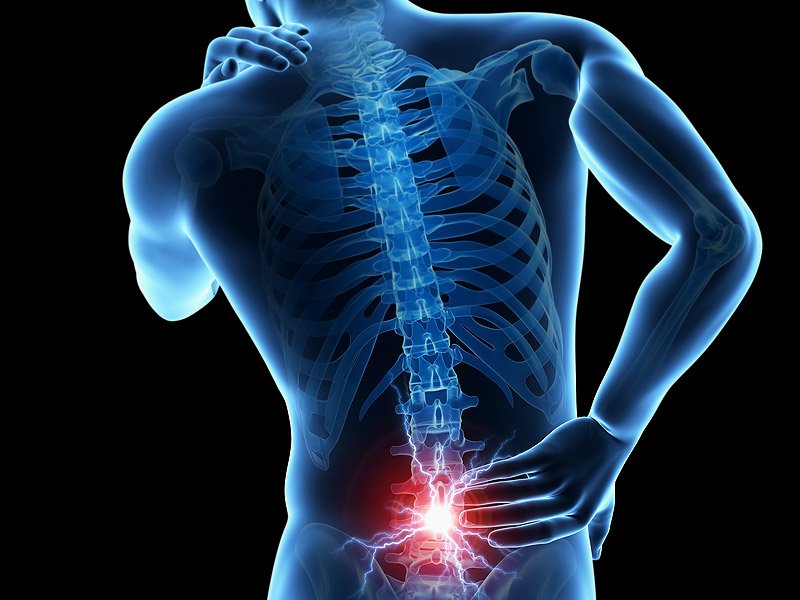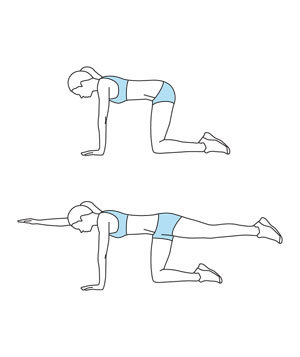Everything you need to know about Lower Back Pain
Posted on July 3rd, 2017 by Andries Lodder
Lower back pain is experienced by almost everybody at some point in their lives. The pain in the lower half of the back or lumbar region can be intense and is one of the top reasons for missed work amoung adults. As bad as all this sounds there is some good news- more often than not lower back pain can get better on its own and if it doesn’t there are many effective forms of treatment that can help.
Before we look at treatments lets discuss the symptoms and some of the most common causes of lower back pain. The symptoms of lower back pain all vary, it can be a dull aching pain, a sharp shooting or stabbing pain. The pain can be acute, which is a very sudden pain as a result of injury, pain that persists and last for weeks to months at a time is considered chronic lower back pain.
The main culprits and causes of lower back pain:
Muscle and ligament strains and sprains:
Lower back pain caused by sudden injuries can be due to ligament and muscle injuries. If treated correctly at the onset of the injury then the back pain can be resolved in roughly 6- 12 weeks depending on the extent of the injury.
Poor posture and lifting techniques:
Jobs that involve substantial amounts of physical activity such as, heavy lifting, pulling or any twisting movements can lead to lower back pain especially if done with poor technique. However sitting at a desk all day also comes with risks of its own. Sitting for hours on end at a desk with poor posture, hunched shoulders, and in a chair with bad back support places excess pressure on the spine and is one of the largest contributors to lower back pain.
Herniated disks:
The fluid filled disks that absorb pressure between the vertebras of the spine can degenerate and often the fluid inside can bulge or herniate out. If this herniation touches and puts pressure on the spinal nerves, this can lead to sharp shooting pains, numbness and intense pain.
Other chronic conditions such as spinal stenosis, spondylolysis and fibromyalgia can also cause lower back pain.
Basic treatments for lower back pain:
Once the cause of the lower back pain has been identified and diagnosed by a health care practitioner then the appropriate treatment can be implemented.
Short periods of rest and activity modification:
Initially short periods of rest can be helpful to relieve lower back pain. However, it is not recommended that a person rests for more than 2 days as this can make healing even more difficult. If the initial rest isn’t effective then activity modification can be helpful. Avoiding the aggravating activity can help reduce muscle spasms and pain and create a more healing environment.
Heat/ice therapy:
Heat from a hot bath or heating pad can help relax muscles in spasm; it will also increase blood flow to the area which will help increase the body’s natural healing processes. If the lower back pain isn’t due to muscle spasm or tension, but rather due to inflammation then applying ice instead of heat onto the affected area can help reduce the swelling and pain.
In conjunction with the above forms of treatment it is advised that individuals start a supervised exercise program that will strengthen and stretch the appropriate muscles to help reduce and prevent further back pain.
General exercises to treat lower back pain:
- Individuals should focus on stretching the muscles of the lower back, core, hips and legs. It is important to remember that stretching exercises shouldn’t never be bounced or pushed to a point of intense pain.
- Stabilization exercises are essential to help stabilise the spinal column during all movements to ensure that excess stresses and pressures are not places on the muscles, ligaments and joints of the spine.
- Core strengthening exercises are also as important as stabilisation exercises. The core acts as a corset and encloses and stabilises the spine. Core stabilisation exercises require more than just doing sit ups and crunches. Below are examples of 2 basic stabilisation exercises the can be performed to help reduce back pain.
Bird Dog:
- Begin on your hands and knees, with your spine in a straight line from head to toe and core engaged.
- Now, lift your left arm and right leg off the ground simultaneously, extending your right leg behind you and left arm in front of you.
- Hold for five seconds, return to your starting position and repeat for 10 to 15 reps, alternating sides.
Dead bug:
- Lie on your back with your knees bent to 90 degrees.
- Lower your right arm behind your head while simultaneously lowering your left leg to just above the ground.
- Return to your starting position and repeat on the other side, alternating for 10 to 15 reps.
If you experience any pain while performing these exercises then you should stop immediately. It is also advised that before beginning an exercise program you should consult a health care professional who can assess your own individual strengths and weaknesses and prescribe appropriate exercises to address these specific areas.
Tweet


